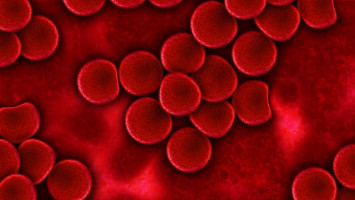
A newly constructed map of the landscape of genetic changes in chronic lymphocytic leukaemia (CLL), a type of cancer of the blood and bone marrow that exists in diverse forms and arises from various causes, provides a better understanding of this complex malignancy that could lead to more accurate prognoses for patients, improved diagnostics, and novel treatments.
The work is published in Nature Genetics and was conducted by an international collaboration of investigators, including teams from the Mass General Cancer Center, the Dana-Farber Cancer Institute and the Broad Institute of MIT and Harvard.
CLL exists as either a slowly or rapidly growing cancer and has been linked with certain genetic mutations, but it has yet to be fully characterised.
Previous analyses have provided only fragments of a CLL “map”, each focusing on particular types of patients or limited data.
To provide a more thorough understanding of the biological underpinnings of CLL and its molecular subtypes, scientists set out to construct a map from the largest CLL dataset to date.
To build the CLL map, the team analysed variations in genetic sequences, gene expression patterns, and chemical modifications to DNA—or genomic, transcriptomic, and epigenomic data—from 1,148 patients.
“Such a CLL map could eventually be leveraged in the clinic, wherein the genomic features of new patients can be compared with the treatments and outcomes of patients with similar genetic profiles,” says co–senior and co–corresponding author Catherine Wu, MD, chief of the Division of Stem Cell Transplantation and Cellular Therapies at Dana-Farber Cancer Institute and professor of Medicine at Harvard Medical School.
“This profiling could potentially help more accurately tailor prognosis and treatment of a new patient based on their particular molecular features, getting closer to precision medicine.”
The scientists identified 202 genes (109 of which were novel) that when mutated could potentially drive CLL, and they refined the characterization of subtypes of CLL with distinct genomic characteristics and prognoses.
Beyond genetic sequences, the expression patterns of certain genes further subcategorised CLL and provided valuable prognostic information.
“Our study has revealed that the genetic and biologic landscape of CLL is more complex than previously appreciated,” says co–senior and co–corresponding author Gad Getz, PhD, director of Bioinformatics at the Mass General Cancer Center and director of the Cancer Genome Computational Analysis group at the Broad Institute.
Patients’ clinical outcomes were associated with a combination of genomic, transcriptomic, and epigenomic features—so that integrating these data could predict a patient’s likelihood of experiencing remission versus developing more advanced cancer.
“We are releasing a CLL map ‘portal’ that is based on the CLL map and will be an interactive website for translational researchers to use as a resource for further investigation—such as learning more about the different drivers and subtypes of CLL,” says Getz.
Source: Massachusetts General Hospital